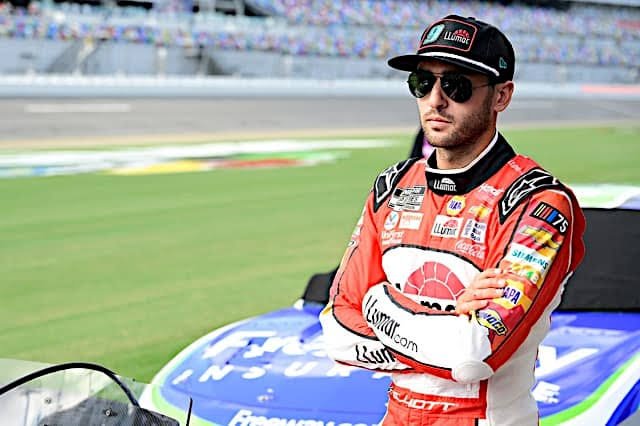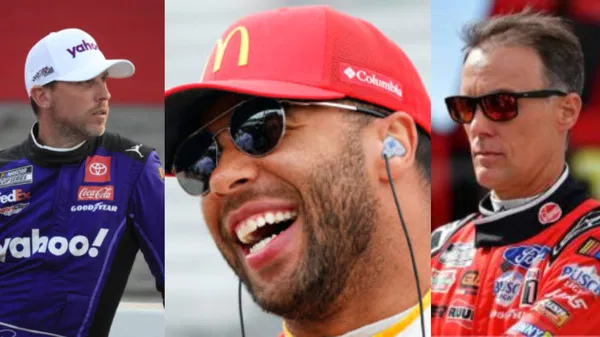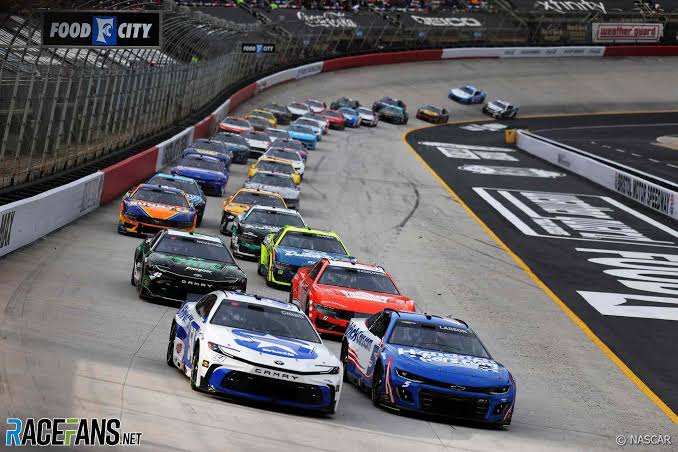Chase Elliott’s recent Did Not Finish (DNF) at the Daytona International Speedway during the Coke Zero Sugar 400 was a stark reminder of the inherent unpredictability and volatility of NASCAR racing. The race, which took place on one of the most notorious tracks in the NASCAR circuit, saw Elliott’s streak of completed laps abruptly halted by a multi-car pileup on Lap 59. This incident not only disrupted his momentum but also had significant implications for the overall championship standings, where he now finds himself 10 points behind Tyler Reddick. As Elliott and his team regroup for the upcoming races, the crash raises critical questions about the strategies that drivers must employ in such unpredictable environments and how this setback might shape Elliott’s approach in the remainder of the season. The impact of this crash extends beyond just the points, hinting at a broader narrative of resilience, competition, and the fine margins that often determine success in NASCAR.
**Key Takeaways from the Daytona Incident**
The crash during the Coke Zero Sugar 400 marked Elliott’s first DNF of the season, a significant event considering his consistent performance up until that point. The Lap 59 incident was part of a larger, chaotic crash involving 17 drivers, including several top competitors, which drastically altered the race’s dynamics and had a ripple effect on the championship battle. Elliott’s DNF left him trailing Tyler Reddick by 10 points, a gap that could prove crucial as the season progresses. The incident highlighted the inherent risks of restrictor plate racing, where drivers are constantly on edge, navigating tight packs at high speeds. Despite the setback, Elliott emphasized the importance of mental resilience and adaptability in the face of such challenges, a sentiment that reflects the broader realities of NASCAR racing.
**The “Big One” at Daytona: A Defining Moment**
The so-called “Big One” at Daytona is a phenomenon that NASCAR fans have come to anticipate during major events at this track. The Coke Zero Sugar 400 was no exception. The crash on Lap 59 was emblematic of the unpredictable nature of restrictor plate racing, where drivers race in close quarters at breakneck speeds, making collisions almost inevitable. The incident, which involved 17 drivers, significantly altered the course of the race, taking out several top contenders, including Chase Elliott. For Elliott, whose No. 9 Chevrolet sustained heavy damage, the crash not only ended his race prematurely but also served as a reminder of the fine line between success and disaster in NASCAR.
The aftermath of such a crash goes beyond the immediate race results. The “Big One” at Daytona reshaped the championship standings, forcing drivers and teams to rethink their strategies for the remaining races. For Elliott, who has championship aspirations, this incident underscores the challenges of racing at Daytona and the broader unpredictability of the NASCAR season. As the series continues, the effects of this crash will likely resonate, influencing team strategies and driver approaches in the races to come. The incident also highlights the delicate balance that drivers must maintain between ambition and caution in their quest for victory.
**Chase Elliott’s Response to the Crash**
Chase Elliott’s reaction to his rare DNF at Daytona offers insight into the emotional toll that high-stakes racing can take on drivers. Faced with the unexpected end to his race, Elliott expressed a mix of disappointment and acceptance, a reflection of the intense pressure and unpredictability that define NASCAR racing.
“I saw smoke, and I was so far in the back of the pack at that point, I was just trying to slow down and hope nobody hits me from behind,” Elliott said, describing the chaotic moments leading up to the crash. His words reveal the instinctual drive that racers have to protect themselves and others in such dangerous situations. This highlights a critical aspect of NASCAR racing: the constant tension between aggression and caution, where drivers must navigate split-second decisions that can have significant consequences.
Elliott also acknowledged the collective mindset of the drivers at Daytona, noting, “Everybody was just trying to get through the stage.” This comment reflects the survival mentality that often prevails at Daytona, where the primary goal for many drivers is simply to make it through the race unscathed. Despite his disappointment, Elliott remained pragmatic, stating, “Obviously, gonna have to go and have a really good week next week.” This determination to refocus on the next race is crucial in a sport where mental toughness often separates the winners from the also-rans.
Elliott’s candid admission that they were “overdue” for a setback speaks to his deep understanding of NASCAR’s inherent unpredictability. His remarks capture the frustration of a driver who, despite his best efforts, fell victim to the sport’s unpredictable nature. But they also reflect the broader reality of NASCAR: each race is a gamble, and the line between success and failure is razor-thin.
**Elliott’s Season of Consistency and the Daytona Setback**
Chase Elliott’s DNF at Daytona was particularly surprising given his strong performance throughout the season. Before the Coke Zero Sugar 400, Elliott had completed all but one of the 6,438 laps in the season, a testament to his skill and consistency. This track record made his early exit from the Daytona race all the more unexpected and significant. It served as a reminder that even the most consistent and skilled drivers are not immune to the chaos that can unfold in a NASCAR race, particularly at a track like Daytona.
As the NASCAR season progresses, Elliott and his team will need to regroup and adapt their strategies in response to this setback. The Daytona crash, while disappointing, is not the end of the road for Elliott. Instead, it represents one of the many challenges that drivers face in their pursuit of the championship. How Elliott responds to this challenge in the coming races will be critical in determining his place in the standings and his overall success this season.
Yet, the chaos of restrictor plate racing would ultimately thwart his efforts, leaving him winless at Daytona throughout his distinguished career. The crash that led to Elliott’s DNF shocked fans and raised questions about the inherent risks of superspeedway racing. Unlike other venues where skill and strategy often dictate outcomes, Daytona’s unique dynamics can render even the most meticulous plans futile.
The collision serves as a reminder that in NASCAR, fortune can shift in mere moments, sidelining even the most competent competitors. Elliott’s inability to finish the race marks his initial DNF of the season, a statistic that is particularly jarring given his historical performance.
With such a rare occurrence, it becomes imperative to recognize the mental and competitive consequences of this setback. As the season progresses, Elliott will need to recalibrate and refocus, leveraging his experience to bounce back from this unexpected adversity.




